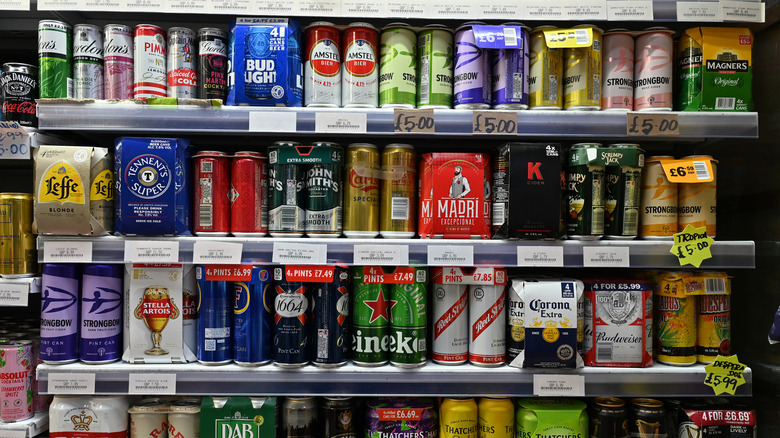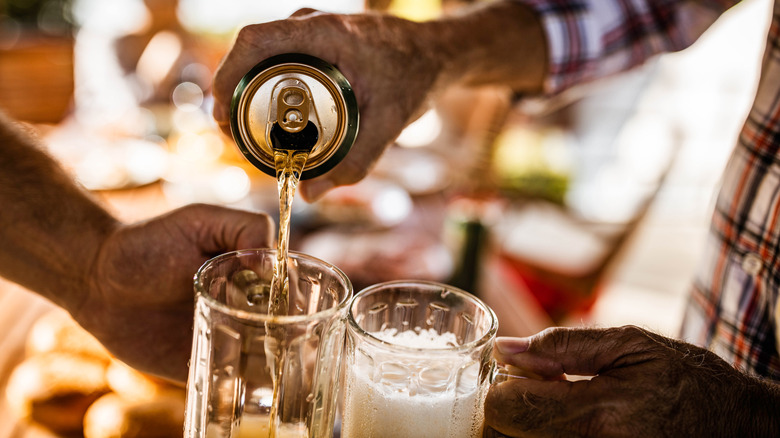The Reason Beer Often Comes In Aluminum Cans
While the creation of beer was (probably) a mistake, putting it into cans was a deliberate process that started just before Prohibition, with Pabst and Anheuser-Busch experimenting with the method. Unfortunately, this was put on hold when alcohol was outlawed in America, but the Gottfried Kreuger Brewing Company of New Jersey revived the practice commercially in 1935. Unbeknownst to them, they were kicking off a trend with many surprising benefits.
Soon after, Schlitz, a Milwaukee brewing company, pioneered a new type of can with a crown top, the same used on bottles. Pabst soon entered the ring but used a flattop design and a thinner tin plating. Schlitz introduced pull tabs in 1965, and four years later, the sales of canned beer surpassed the sale of bottles for the first time.
Beer in cans continued to grow in popularity through the decades until 2002 when the Oskar Blues Brewery became the first craft beer company to use aluminum cans exclusively. While Oskar Blues has said the move was to support outdoorsmen in Colorado with easily packable and disposable containers, beer cans actually have numerous benefits over bottles. Along with being easily crumpled up and recycled, they help protect the quality of the beer and prevent it from getting skunky, which is incredibly important!
How aluminum cans protect the quality of beer
One of the most significant benefits of aluminum beer cans is their protection from light and air. The reason why beer gets skunky is because hops, the ingredient that makes beer bitter, contain iso-alpha acids, which break up when exposed to light and react with riboflavin to create the compound 3-methyl-3butene-1thiol, also called prenylthiol. This compound is very similar to what skunks secrete, which is (E)-2-butene-1-thiol. Because light causes this skunkification, bottled beer is most susceptible, particularly those made from clear glass, which has no protection. While green and brown bottles are better at blocking light, only aluminum cans can block it out 100%.
Moreover, bottles are more vulnerable to oxidation, as air can seep past the cap seal over time, resulting in a loss of flavor as the alcohol and aromatics degrade. Meanwhile, properly sealed cans don't have this problem. The only issue consumers report is a slight metallic taste when drinking beer from cans. However, this can be mitigated by pouring beer into a glass since the taste usually comes from how close your nose is to the can.

